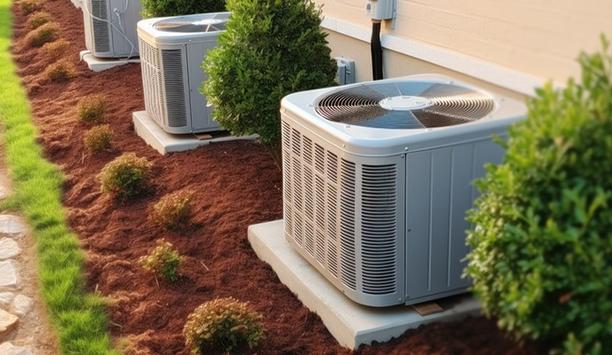The computing power we know as the Internet actually resides in millions of data centers that house rows and rows of computer servers. And each data center represents a unique HVAC challenge: How to keep the equipment cool, the air pure and the humidity low. Providing the ideal operating conditions for a room full of computers requires the best that the HVAC market can offer.
Data centers come in all shapes, sizes and configurations. Some are huge facilities that serve the needs of giants, such as Google, Amazon and Microsoft. Others are smaller and might contain the servers for a single company. In every case, there is expensive equipment operating, creating enormous amounts of heat and there is important data to be preserved.
Air quality and temperature monitoring
Data centers have a narrower range of acceptable environmental factors when compared to typical buildings
Air quality and temperatures are monitored around the clock, and even small discrepancies can undermine the whole operation. Data centers have a narrower range of acceptable environmental factors when compared to typical buildings. ASHRAE provides guidelines and best practices for mission-critical facilities, which should be followed by any contractor working with data centers.
The layout of a data center is an important consideration – what is the location of servers and other key equipment? Appropriate parameters in various zones ensure correct temperatures and humidity levels.
Managing power loads
Access must be maintained to the electrical infrastructure and supplies, and attention must be paid to electric loads. Typically, an HVAC system uses its own electrical supply, separate from the system that the servers depend on. This approach helps with managing power loads.
Often server rooms have raised floors to provide technicians access to the infrastructures. Fans placed under the floor can discharge air in a wider pattern for more uniform cooling. Server rooms may also have higher ceilings to provide room for large equipment racks. These features can impact air flow, temperature and humidity and should be incorporated into HVAC system designs.
‘Hot aisle, cold aisle’ approach
Managing higher heat loads of computer servers arranged in rows at data centers can use a ‘hot aisle, cold aisle’ approach. Cold air intakes and hot air exhausts face alternating rows.
Because of moisture concerns, only plumbing that relate to fire suppression should be located near the server rooms. Server rooms typically do not have windows or outside doors or outside-facing walls.
Air filtration
For air quality, filters eliminate the smallest particles such as dust or pollen. HEPA filters are effective
For air quality, filters eliminate the smallest particles such as dust or pollen. HEPA filters are effective. Other factors include new motor types, fewer moving parts, and more sensors to provide predictive maintenance. Preventive maintenance is a better approach than facing the possible dire consequences of an emergency. Keeping spare parts on hand is a good way to minimize risk.
Variable-speed fans save energy, and they use motors that do not require belts, pulleys or bearing hardware for cleaner operation and less contamination, and less frequent maintenance. However, monthly HVAC inspections should be implemented to ensure maximum data center uptime.
Mission-critical HVAC systems
Mission-critical HVAC systems for data centers fall into two categories. One is Computer Room Air Conditioners (CRAC), which use compressors and are deployed for perimeter cooling.
The other is Computer Room Air Handlers (CRAH), which use water from a centralized chiller and a control valve to provide cooling. Stand-alone ultrasonic units take the place of internal humidifiers on CRAC and CRAH units.






































